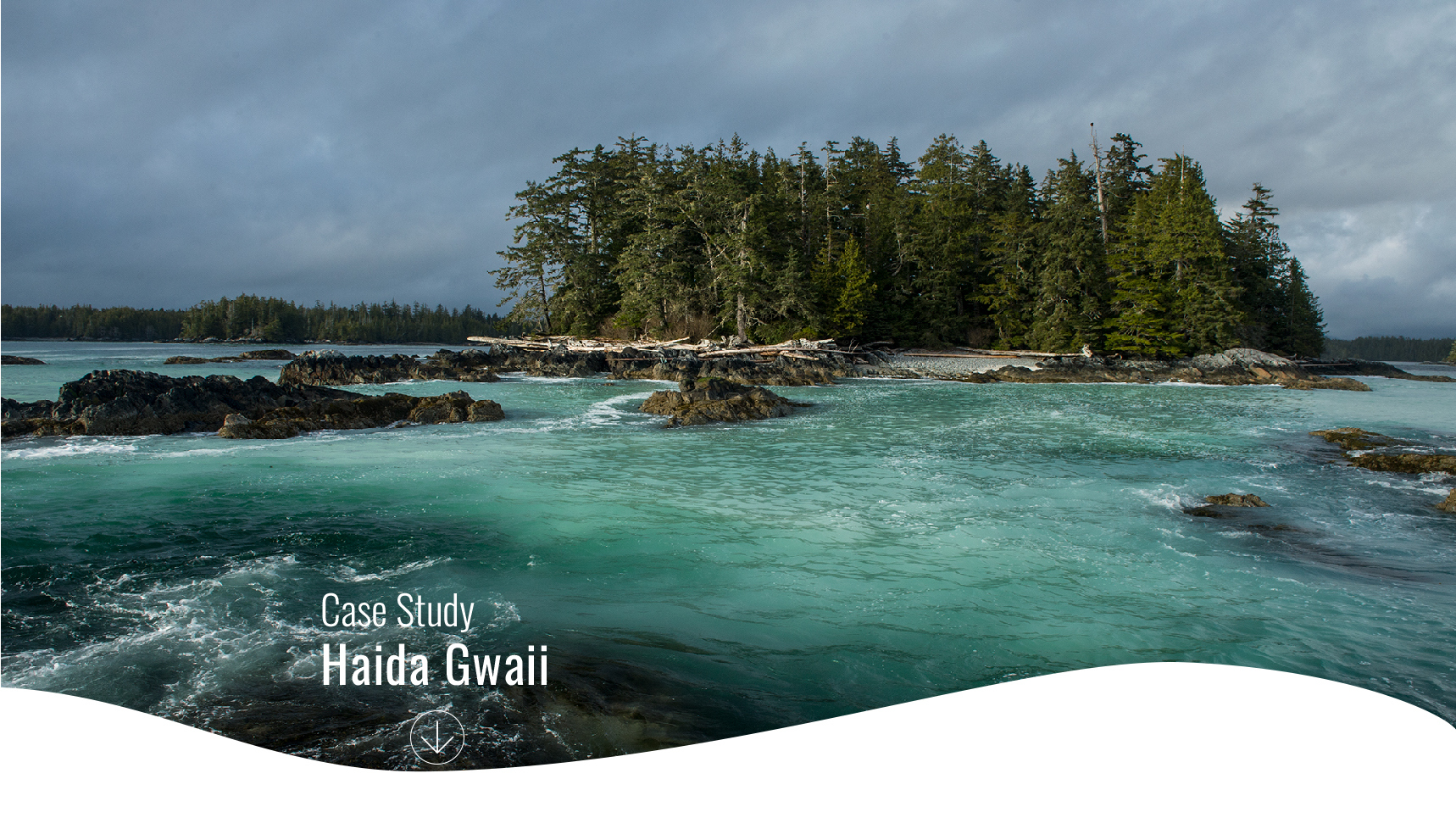Learn More
To find out more about our research, visit our project website at www.oceantippingpoints.org. If you have additional questions, please contact case study lead, Dr. Phil Levin.
Our Team
Phil Levin, The Nature Conservancy, Case study lead
Jameal Samhouri, NOAA Northwest Fisheries Science Center, Co-lead
Melissa Poe, University of Washington, Washington Sea Grant, NOAA, Co-lead
Rebecca Martone, Stanford University Center for Ocean Solutions, Co-lead
Cindy Boyko, Council of the Haida Nation
Chief Gindansta (Guujaaw), Citizen of the Haida Nation
Ernie Gladstone, Parks Canada
Ben Halpern, National Center for Ecological Analysis and Synthesis, UCSB, Imperial College
Megan Hinzman, University of Saskatchewan
Mary Hunsicker, NOAA Northwest Fisheries Science Center
Russ Jones, Council of the Haida Nation
Carrie Kappel, National Center for Ecological Analysis and Synthesis, UC Santa Barbara
Phil Loring, University of Saskatchewan
Megan Mach, Stanford University Center for Ocean Solutions
Kristin Marshall, NOAA Northwest Fisheries Science Center
Daniel McNeill, Council of the Haida Nation
Dan Okamoto, Simon Fraser University
Catherine Rigg, Council of the Haida Nation
Courtney Scarborough, National Center for Ecological Analysis and Synthesis, UC Santa Barbara
Adrian Stier, University of California Santa Barbara
Hilary Thorpe, Parks Canada
Hilary Walecka, Stanford University Center for Ocean Solutions
Giida Kuu Juus Walker, Citizen of the Haida Nation
See the full list of Ocean Tipping Points project contributors.
References
- Costello et al. 2016. Global fishery prospects under contrasting management regimes. Proceedings of the National Academy of Sciences. 113(18): 5125-5129
- Costello et al. 2012. Status and solutions for the world's unassessed fisheries. Science 338(6106): 517-520
- Pikitch et al. 2012. Little fish, big impact: Managing a crucial link in ocean food webs. Lenfest Ocean Program. Washington, DC. 108 pp.
- Lindegren et al. 2013. Climate, fishing, and fluctuations of sardine and anchovy in the California Current. PNAS 110(33):13672-13678.
- Zwolinkski & Demer. 2012. A cold oceanographic regime with high exploitation rates in the Northeast Pacific forecasts a collapse of the sardine stock. PNAS 109(11): 4175-4180.
- Cury et al. 2011. Global seabird response to forage fish depletion--one-third for the birds. Science 334(6063): 1703-1706
- McKechnie et al. 2014. Archaeological data provide alternative hypotheses on Pacific herring (Clupea pallasii) distribution, abundance, and variability. PNAS 111(9): E807-E816.
- Kelly et al. 2015. Embracing Thresholds for Better Environmental Management. Philosophical Transactions of the Royal Society B 370: 20130276.
- Battista et al. 2016. A Comprehensive method for assessing marine resource governance: Case study in Kāne‘ohe Bay, Hawai‘i. Coastal Management 44: 295-332.
- Stier et al. Spatial synchrony and the role of fishing and climate as drivers of Pacific herring population dynamics. In review, Journal of Applied Ecology.
- Stier et al. 2016a. Ecosystem context and historical contingency in apex predator recoveries. Science Advances 2(5): e1501769
- Samhouri et al. 2017. Rapid and direct recoveries of predators and prey through synchronized ecosystem management. Nature Ecology & Evolution 1: 0068.
- Collie et al. 2013. Marine spatial planning in practice. Estuarine, Coastal and Shelf Science. 117: 1-11.
- Stier et al. 2016b. Integrating expert perceptions into food web conservation and management. Conservation Letters. 10(1): 67-76.
- Jones. 2000. The herring fishery of Haida Gwaii: an ethical analysis. Just fish: ethics and Canadian marine fisheries. Social and Economic Papers 23: 201-224.
- Jones. 2005. Application of Haida oral history to Pacific herring management. Fishers' knowledge in fisheries science and management.
- McKechnie 2013. An archaeology of food and settlement on the Northwest coast. University of British Columbia Ph.D. Thesis.
- Council of the Haida Nation. 2011. Haida Marine Traditional Knowledge Study.
- Gwaii Haanas Interim Management Plan. 2010. Interim Management Plan and Zoning Plan: Gwaii Haanas National Marine Conservation Area Reserve and Haida Heritage Site
- Shelton et al. 2014. Assessing trade-offs to inform ecosystem-based fisheries management of forage fish. Scientific Reports 4: 7110.
- Litzow et al. 2013. Rising catch variability preceded historical fisheries collapses in Alaska. Ecological Applications 23: 1475-1487.
- Hicks et al. 2016. Social drivers forewarn of marine regime shifts. Frontiers in Ecology and the Environment 14(5): 252-260.
